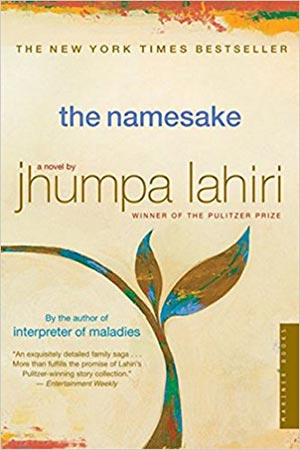THE first time I heard of Jhumpa Lahiri, she was described in terms that imparted her superstar status within the literary world, and with the superstar status of writers being such an extremely rare thing, I immediately made it my mission to find her work and to start reading her as soon as I could.

I borrowed a copy of “The Namesake” from the National Library and I set about reading the novel. Unfortunately, I only got to about 50 pages in when I decided I could not go on anymore. I decided that the book was simply not interesting enough for me – that it was drab and devoid of truly dramatic and stimulating material. I returned the book to the library and I did not read anything by Lahiri for many years.
Recently, however, about seven years since I first tried to read “The Namesake”, I encountered the book once more. It was a part of the syllabus that I was teaching to my 12th Grade English Class. This meant that there was no avoiding the book. If I was supposed to teach it to the students, then I definitely had to read it.
My second effort at the novel was markedly different from my first encounter. I devoured it in an extremely short span on time, hungrily taking in every word, every paragraph, every chapter, and then when I reached the end, still looked around, desperate for more to read. I ask myself now, why I enjoyed the book so much the second time when the first time was such a disaster, and the answer I end up with has to do with my own growth and development. We are not now the same people we were 10 years ago, and so, we must also be aware that our tastes and inclinations also change as the years go by.
Therefore, “The Namesake”, a novel about identity, family, the immigrant experience and relationships appeals more to me now than it would have to me at 20 years old. This, perhaps, serves as a reminder to constantly to return to works that we initially discard, simply because there might be so much to be gained that we might not even be aware of when we reject, for whatever reason, certain types of literature.
Another reason why I think I enjoy the novel more now has to do with my awareness of how I have learned to accept and enjoy a wide variety of literature. At one point in my life, I was mostly drawn to literature that, to use an art metaphor, highlighted its themes and ideas in broad brushstrokes. I needed literature for the spectacle and drama; for the exaggeration and bigger than life plots, that certain writers were able to make believable to the reader. Lahiri’s prose seems to be the exact opposite of this.
She writes of normal people, living normal lives, and experiencing normal conflicts and emotions. There are no monsters or magic or murders. Her focus is everyday life and the beauty in that. Her gift, it seems, as represented particularly well in “The Namesake” has to do with highlighting how that which we perceive as normal actually has a lot of value to literature and to human lives, in much the same way other, ‘grander’ forms of fiction has value.
The opening lines of “The Namesake,” for example, open with an Indian woman cooking in her kitchen, rather than with some explosive lines. In a way that only Lahiri can capture, this expression of normalness – of an everyday scenario – carries a weight and beauty, perhaps because of its very familiarity and universality that is as powerful as horror scene in a Stephen King novel or a scene with dragons that has been written by George R. R. Martin. Lahiri’s novel with its focus on the norm forces us to re-examine our own lives and to observe the beauty and sorrow, the harshness and the warmth, that can be found in our own existence because her characters represent the common man – a category into which most readers fall – and this is enough to emphasise the power of Lahiri’s writing.
“The Namesake” has a plot riddled with simple moments that are magnified and filled with meaning and magic. Take, for example, Ashima, sent to live in America with the husband her parents have found for her. Ashima’s married life and her relationships with her husband and children serve as a potent and beautiful reminder of the struggles of mothers and the burdens they bear. Ashima growth as a girl who is unable to leave her new home, to an old movie who decides to live her own life finally ensures that the reader to think about all the women similar to Ashima that he/she knows, and sees that these ‘normal’ women are in fact so much more.
Similarly, Ashima’s son, Gogol and his deep-hatred of his name and, perhaps, by extension, his Bengali heritage, reflect all the insecurities that have plagued every person in this world. Who has not had some aspect of themselves, mostly ignored by society but magnified in our minds, that we believe to be the source of our problems and the reason we are constantly held back? Gogol’s relationship with his name, his family, and the various women in his life, are sure to make us observe our own relationships and query the meaning behind our attitudes towards those closest to us. Overall, “The Namesake” stands out because it highlights how a work of literature can be simple, yet earth-shaking and powerful. I am sure that it is only the first on the list of books I have rejected in the past that needs to be revisited.



.jpg)








